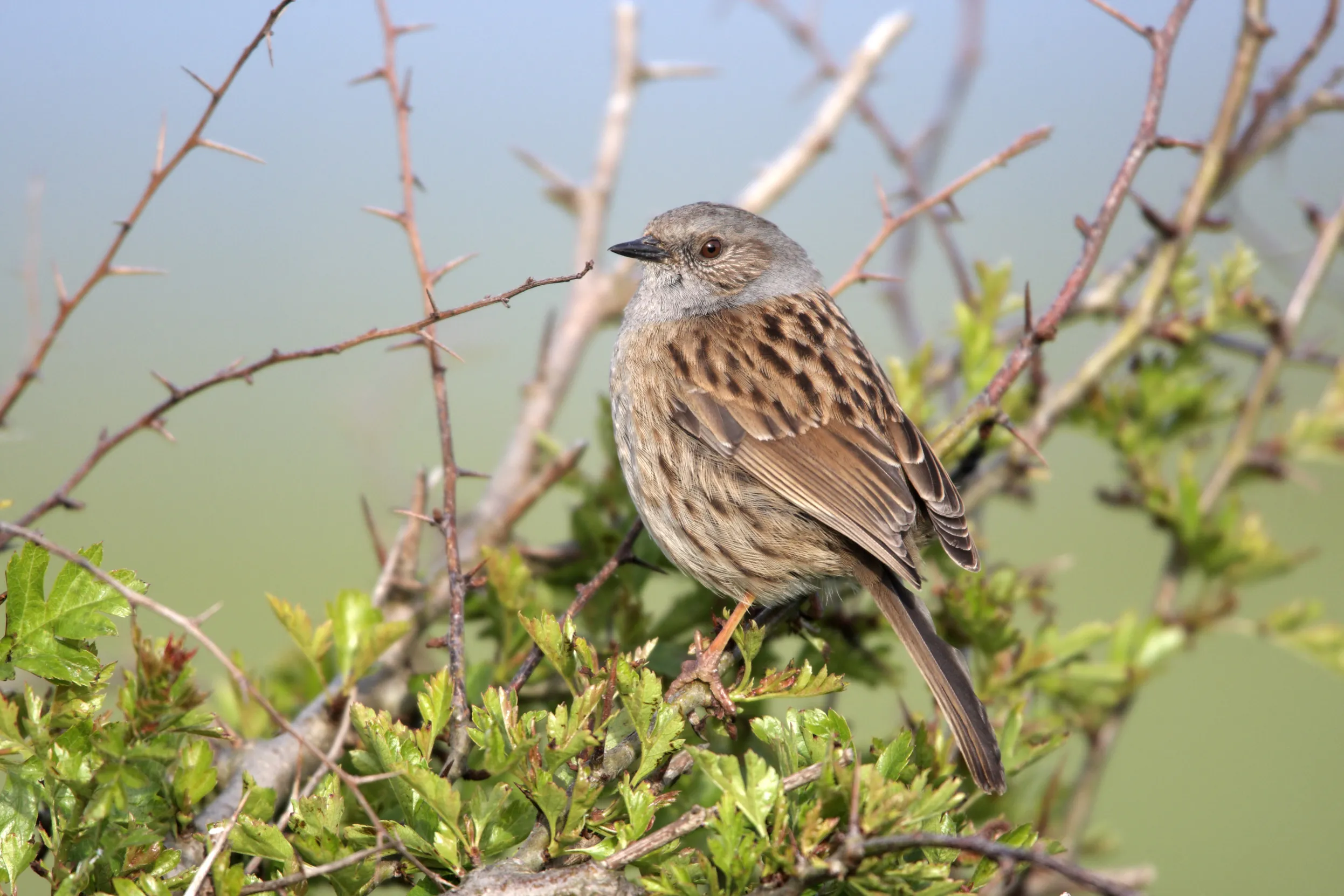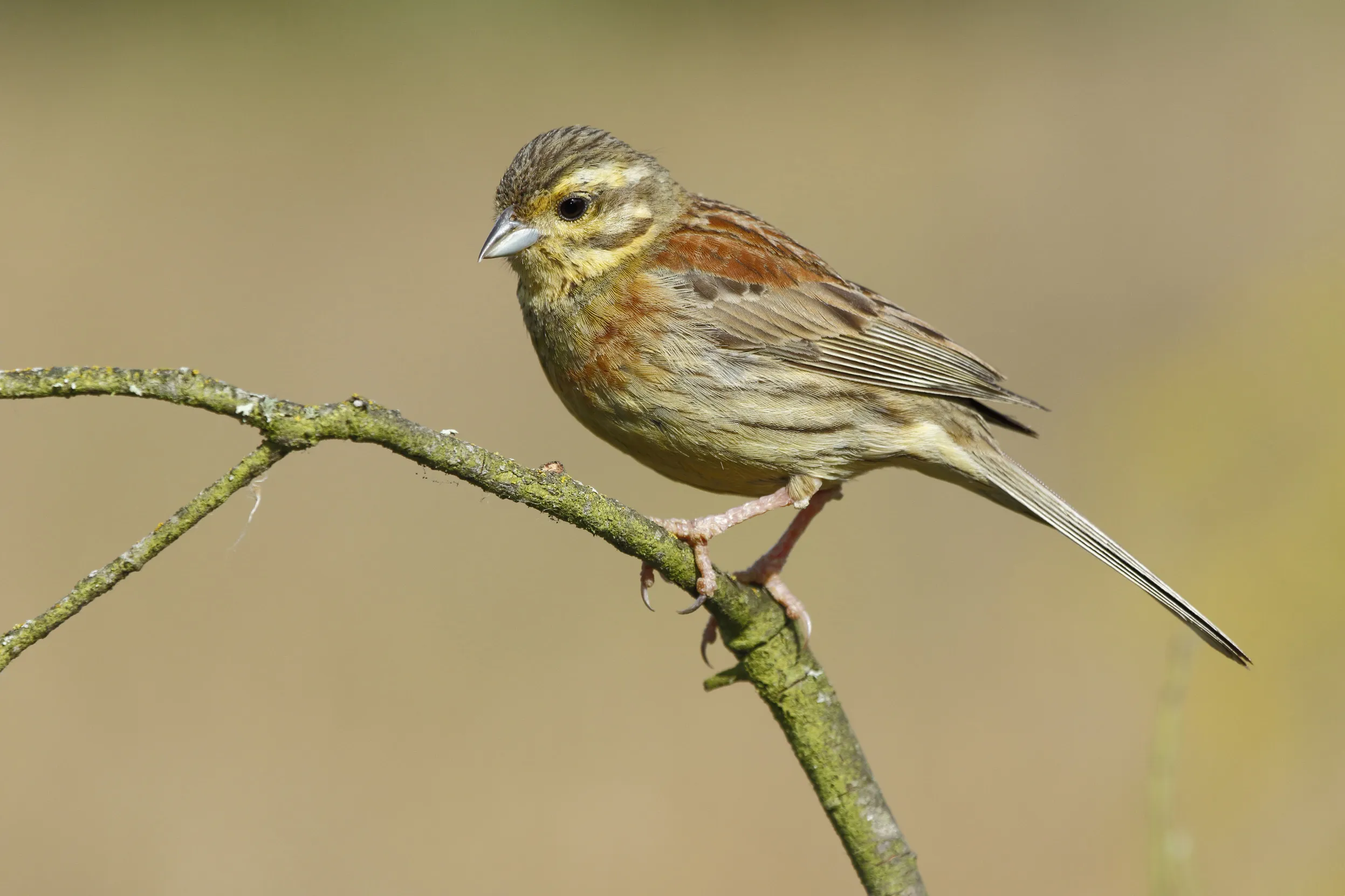News
How conservation work on Tristan da Cunha is helping break down barriers
Discover how work to protect one of the world’s biggest marine reserves is making waves for women too.
From 6 – 12 May, we’re celebrating National Hedgerow Week! Hedgerows have indicated land boundaries and contained livestock since the Bronze Age. But for wildlife, these strips of shrubs and trees are more than just a means to mark an edge. Hedgerows provide a place to raise a brood, an opportunity to forage for food and a highway to connect habitats.
.jpg)
If you head outside at night in autumn, you might be accompanied by the ‘tseep tseep’ calls of migrating Redwings overhead. Hedgerows, laden with Sloe, Hawthorn berries and Blackberries, provide the perfect pitstop to refuel after a journey from Scandinavia for the UK’s overwintering thrushes.
Head out for a stroll a few months later, and you’ll see Blackthorn offering up an early sign of spring: its blossom is one of the first to burst into bloom. Intertwined with Hawthorn and Hazel, these hedgerows are alive with the chattering of finches and buntings and the songs of warblers, searching out a mate and building a nest.
On hot, hazy days, you’ll find Swallows skirting along field boundaries, mouth agape, feasting on the wing. Dusk draws in and bats commute between woodlands, following the train track-like lines of hedgerows that course through the landscape.
The UK’s hedgerows (all 95,000 miles of them!) are a critical habitat, supporting up to 130 of our priority species throughout the seasons. To celebrate National Hedgerow Week, we’re taking you for a closer look at some of the bird species which call our hedgerows home:
Ever heard of the Hedge Sparrow? Dunnocks are a common garden visitor, often found skulking about in hedgerows - but the latter half of this nickname offers a much less accurate description! These birds aren’t related to sparrows at all, instead they’re the only member of the accentor family native to the UK. Other species of the accentors are generally alpine birds, but Dunnocks are happy enough at home in a humble garden hedge.
Their slim, pointy beaks mean they’re perfectly equipped to eat invertebrates, often foraging for insects on the floor, unlike the sparrow whose diet tends to be made up mainly of seeds.

House Sparrows consistently fly to the top spot in Big Garden Birdwatch, but it’s less likely that you’ve ever had an encounter with their close relative: the Tree Sparrow. The familiar male House Sparrow is recognisable by its grey head, and it’s likely to be a frequent visitor in your garden. Despite being the Big Garden Birdwatch number one for 21 years, these birds decreased by 71% between 1977 and 2008, and are continuing to decline, due to a lack of food and nesting habitat.
Meanwhile, both the male and female Tree Sparrows have a characteristic copper top, along with a distinct black cheek spot These birds are much smaller and much shyer, nesting in holes in old trees or in dense bushes. But it’s not just their introverted nature that makes them more difficult to spot. Tree Sparrows are also facing sharp declines, and they aren’t taking advantage of urban habitats in the same way their cousins are.
Tree Sparrows mostly feed on seeds, but our countryside hedgerows provide them with the opportunity to both nest and forage for insects in spring, a favoured food source for their chicks.

Strongly associated with farmland, Linnets feast mostly on seeds. These small finches are named as such because of their preference for Linseed, from the flax plant. Linnets were once a sought-after caged bird, valued for their melodic song.
These finches are present all year round. In spring and summer, hedgerows provide a sheltered place for these birds to nest. Through the winter, Linnets can be found in large mixed flocks of finches, scouring the countryside for seed.

These small, seed-eating buntings are birds of lowland farmlands. They’re famous for their “little-bit-of-bread-and-no-cheese” song which erupts from the top of bushes. If you follow the sound, you’ll find a male Yellowhammer, proudly perched, his bright yellow plumage matching gorse flowers. These birds prefer to nest low down, building cup-shaped nests in hedgerows where they’re concealed from predators.
The Yellowhammer’s song is now a much scarcer sound in our countryside, with populations plummeting by 61% between 1967 and 2020, due to a lack of food source and a decline in nesting habitat.
.jpg)
Cirl Buntings are one of the UK’s rarest birds, confined to small areas in Devon and more recently, after reintroduction, can also be seen in Cornwall. Once widespread throughout the UK, these birds were on the brink of extinction as a breeding species here in 1980s. These buntings travel very little; as a non-migratory species, they need their chosen habitat to provide food consistently throughout the year. Changes in agricultural practice have meant the food sources for Cirl Buntings became scarce, particularly in the winter months. A reduction in hedgerows also resulted in these birds finding fewer nesting opportunities.
However, Cirl Buntings numbers increased by almost 10 times between the 80s and 2016. A 25-year partnership project between the RSPB, Natural England and farmers in the southwest of England saw this species make a remarkable recovery.

Referenced in the Bible and cemented in Christmas celebrations, the many mentions of Turtle Doves littered throughout literature indicate its historical abundance. But now, the story of the Turtle Dove tells a very different tale. They’re the UK’s fasting declining birds, with 98% of their population lost since 1970.
One contributing factor to the dramatic decline is a loss of habitat. Turtle Doves like to lay eggs in thorny shrubs, their nests will often be deep in a tangle of the scrambling plants in the hedge, like honeysuckle and ivy.
Operation Turtle Dove is a science-led conservation partnership project, working together with farmers, to create breeding habitat and food sources for these migratory birds. Learn more about how, by working together, we can help Turtle Doves to thrive. Giving Turtle Doves a helping hand at home and abroad.

Many of our declining farmland bird species are suffering at the hands of habitat loss and decreasing food sources. Hedgerows can provide solutions to both issues, offering birds a sheltered place to lay their eggs, while providing a food source for birds and their chicks.
After the Second World War, the UK raced toward the goal of food independence. To increase the productivity of the land, farmers were incentivised to remove their hedgerows to maximise growing space. Prior to the knowledge of how valuable hedgerows were for wildlife, it’s thought that the UK lost up to 50% of its hedgerows.
Thankfully, the tides turned for hedges in the 1990s. The rate of the planting of hedgerows began to exceed the rate of their removal. Regulations were introduced to ensure hedgerows couldn’t be removed without permission, and further cross compliance protections prevented them from being cut during bird nesting season.
Early this year, these cross-compliance regulations expired and the safety of our hedgerows, and the wildlife dependent on them, was put at risk. With your support, backing our Help Our Hedgerows campaign, the UK Government is now on course to reinstate the prevention of agricultural hedge cutting during nesting season from 1 March – 31 August and guarantee a two-metre buffer strip surrounding hedgerows, free of cultivation and pesticides. Thanks to you, breeding habitats for threatened wildlife have been safeguarded. Read more of the story here Hedgerow protections reinstated in England.
While the future of hedgerows on farmland may be looking brighter, you can still do your bit at home too! Why not help the wildlife in your garden by planting a hedge? Our wildlife gardening experts are on hand to help you make the most of hedgerow species on your patch, even if you only have a small space. Find your guide here.